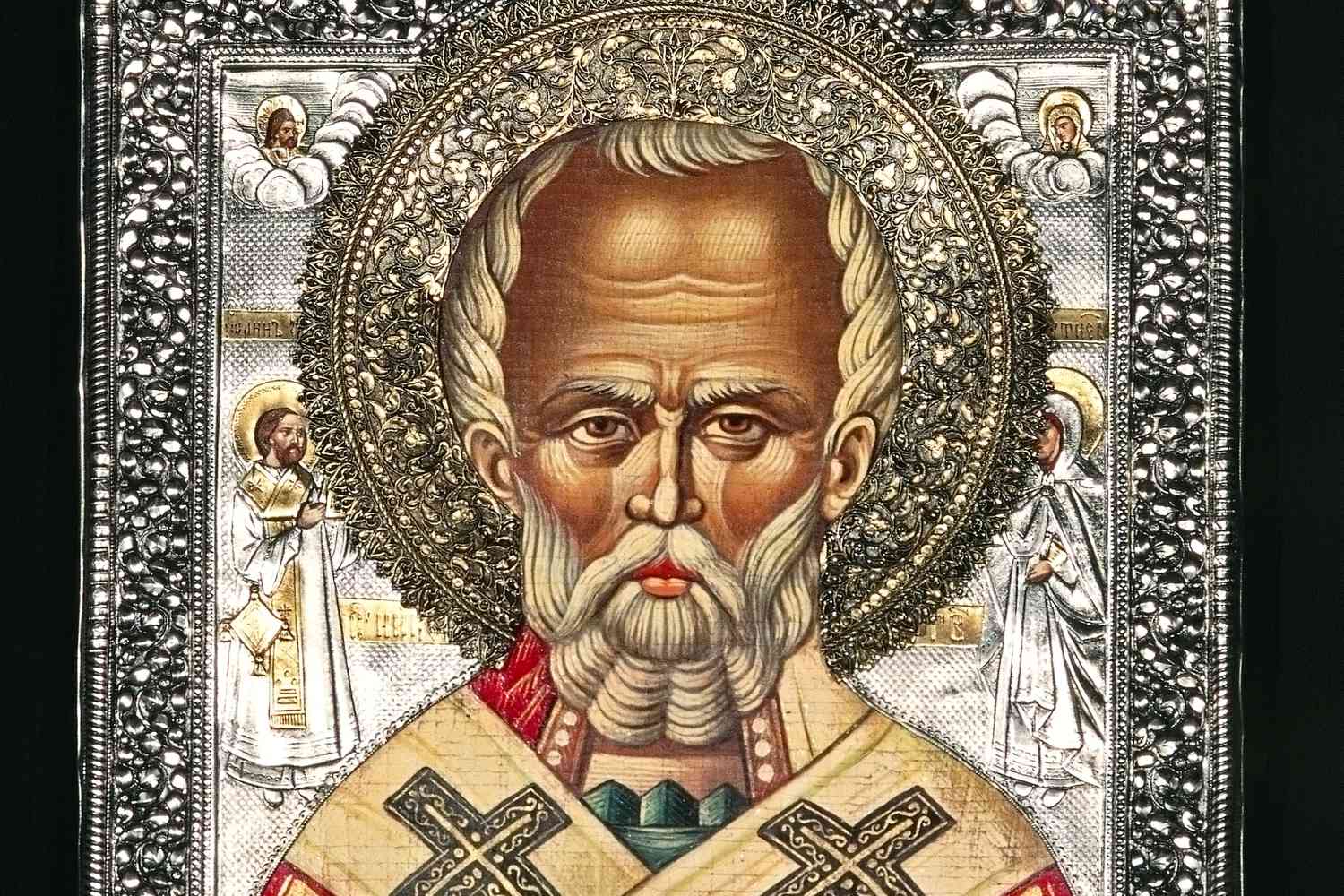by Brent Kostyniuk
Of all the saints commemorated in the Byzantine liturgical year, one of the most beloved surely has to be our Holy Father Nicholas the Wonderworker, Archbishop of Myra. Although not exclusively a Ukrainian saint, he has won a special place in the hearts of Ukrainians. In Canada alone, there some two dozen Ukrainian Catholic parishes dedicated to his memory. Come December, no Christmas concert is complete without a visit from St. Nicholas, dressed in his bishop’s vestments, arriving to bring presents for the children. In return, he is serenaded with O, Xto, Xto a carol telling of St. Nicholas’s love for all people.
There are no contemporary records of St. Nicholas’s life. However, tradition kept his memory alive until written accounts were compiled centuries after his death. He is said to have been born on March 15, 270 in the Greek seaport of Patara, Lycia in Asia Minor to wealthy Christian parents. In his youth, he made a pilgrimage to Egypt and Palestine. Shortly after his return, he became Bishop of Myra. He was later cast into prison during the persecution of Diocletian, but was released after the accession of Constantine. He died on December 6, 343, the day now commemorated as his feast.
There are many stories about St. Nicholas’s generosity. Perhaps the most famous was when he saved three poor girls from being forced into prostitution by dropping a sack of gold coins through the window of their house each night for three nights. With the money, their father was able to provide a dowry for each of them. Other early stories tell of him calming a storm at sea, saving three innocent soldiers from wrongful execution, and chopping down a tree possessed by a demon. Saint Nicholas is the patron saint of sailors, merchants, archers, repentant thieves, children, brewers, pawnbrokers, unmarried people, students, and even several European countries.
Aside from his legendary generosity, St. Nicholas was a deeply spiritual man, devoted to preserving the purity of Christian faith. When Emperor Constantine convened the Council of Nicaea in 325, more than 300 bishops came from all over the Christian world to debate the nature of the Holy Trinity. Among those present was Arius, from Egypt. He professed that Jesus the Son was not equal to God the Father. St. Nicholas was outraged by this heresy and let his emotions get the better of him. No longer able to contain himself, legend states that St. Nicholas crossed the room to where Arius was speaking and slapped him across the face.
As a result of his actions, the bishops attending the council had St. Nicholas stripped and imprisoned so he could no longer take part. Although he had be chastised, St. Nicholas did not waiver in his belief, but prayed for forgiveness for his action. According to legend, one night Jesus and Mary appeared to him and asked why he was in jail. “Because of my love for you,” he replied. At that, Jesus gave St. Nicholas a gospel book, while Mary gave him an omophorion, so he could once again be vested as a bishop. He spent the rest of the night studying the Scriptures. When Emperor Constantine heard of this miracle, he ordered St. Nicholas be freed and reinstated as Bishop of Myra. Eventually, Council sided with St. Nicholas [and the Apostolic Teaching] and produced the first part of the Nicene Creed which upholds the equality of Jesus, the Son, with the Father.
Unfortunately, in Canada and many other countries, the story of St. Nicholas has been overshadowed by his alter ego, Santa Claus, an English language corruption of Sinterklaas, his name in Dutch. In that country, he is portrayed in a bishop’s tall hat, red cape, shiny ring, and a bejewelled staff. His feast day is still widely celebrated in Holland. Our image of Santa Claus is largely shaped by the poem The Night Before Christmas written by Clement Moore, first published in 1823 in the Troy Sentinel under the title Account of a Visit From St Nicholas. Surprisingly, the poem does use the term Santa Claus; however St. Nicholas is mentioned four times. The poem is responsible for our image of a pipe smoking, rosy cheeked, pot-bellied, fur clad character who enters people’s homes through their chimneys and travels the world in a sleigh pulled by eight reindeer.
Recently St. Nicholas was in the news when archaeologists discovered his original tomb beneath the floorboards of St. Nicholas Church in Myra, in southern Turkey. The church was built under the orders of Theodosius II some 200 years after the saint’s death. The new church was built over top of the original building where St. Nicholas had served as bishop. When Theodosius’s church was completed, St. Nicholas’s remains were moved to a sarcophagus, where they remained until 1087. At that time the region was under Turkish rule. In that year, without authorization, a group of merchants from the Italian city of Bari took the major bones of Nicholas’s skeleton to their hometown, where they remain enshrined in the Basilica of San Nicola. The remaining bone fragments were later removed by Venetian sailors during the First Crusade and taken to Venice. Now, along with St. Nicholas’s original tomb, a section of mosaic floor on which the saint actually walked has been uncovered. Eventually, it is hoped the site will be made available for pilgrims to visit.
So, the next time you are at the mall or a Christmas party and see Santa Claus with his bright red fur-lined suit, take time to remember the real Sinterklaas, St. Nicholas the Wonderworker.

